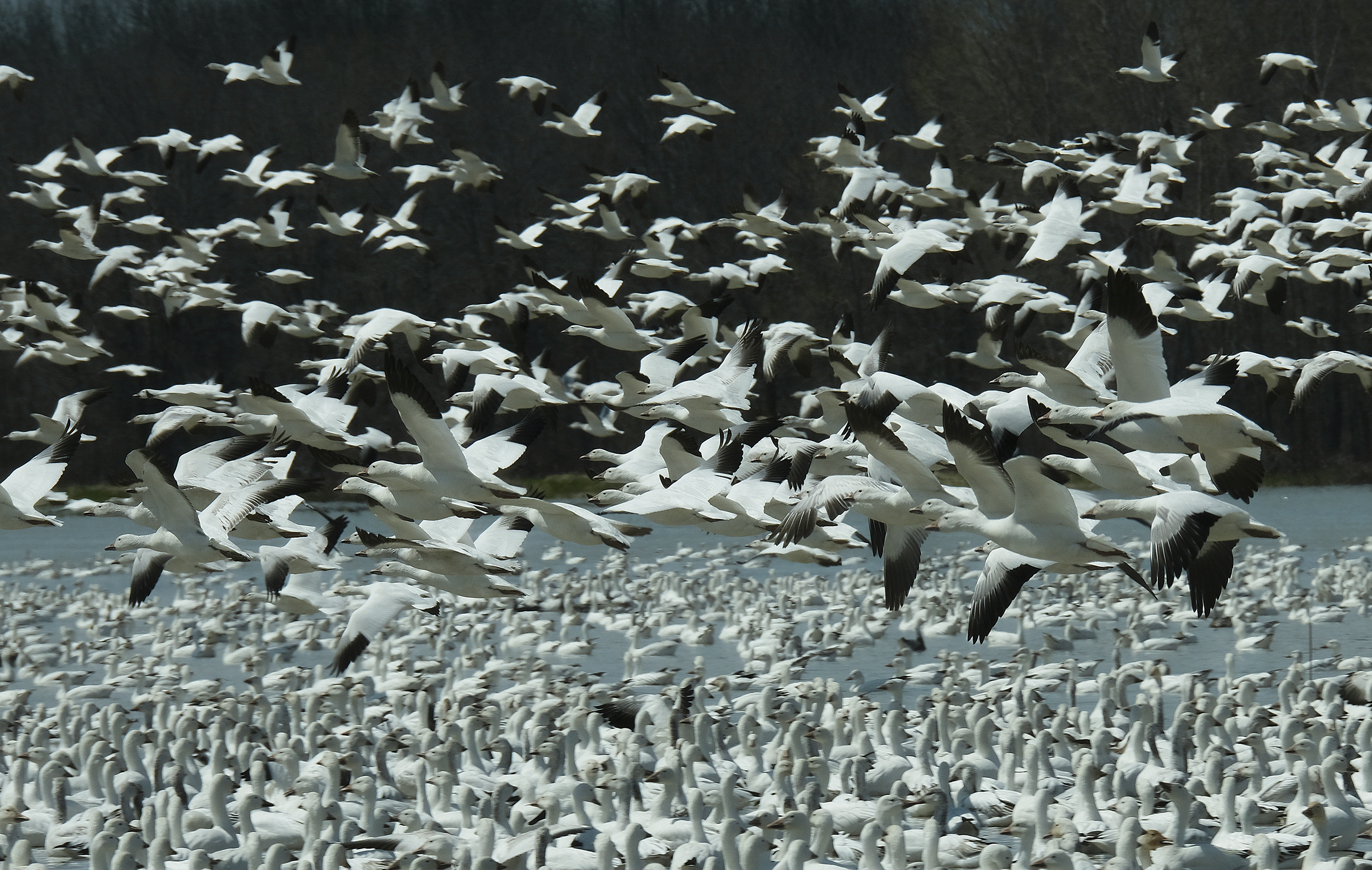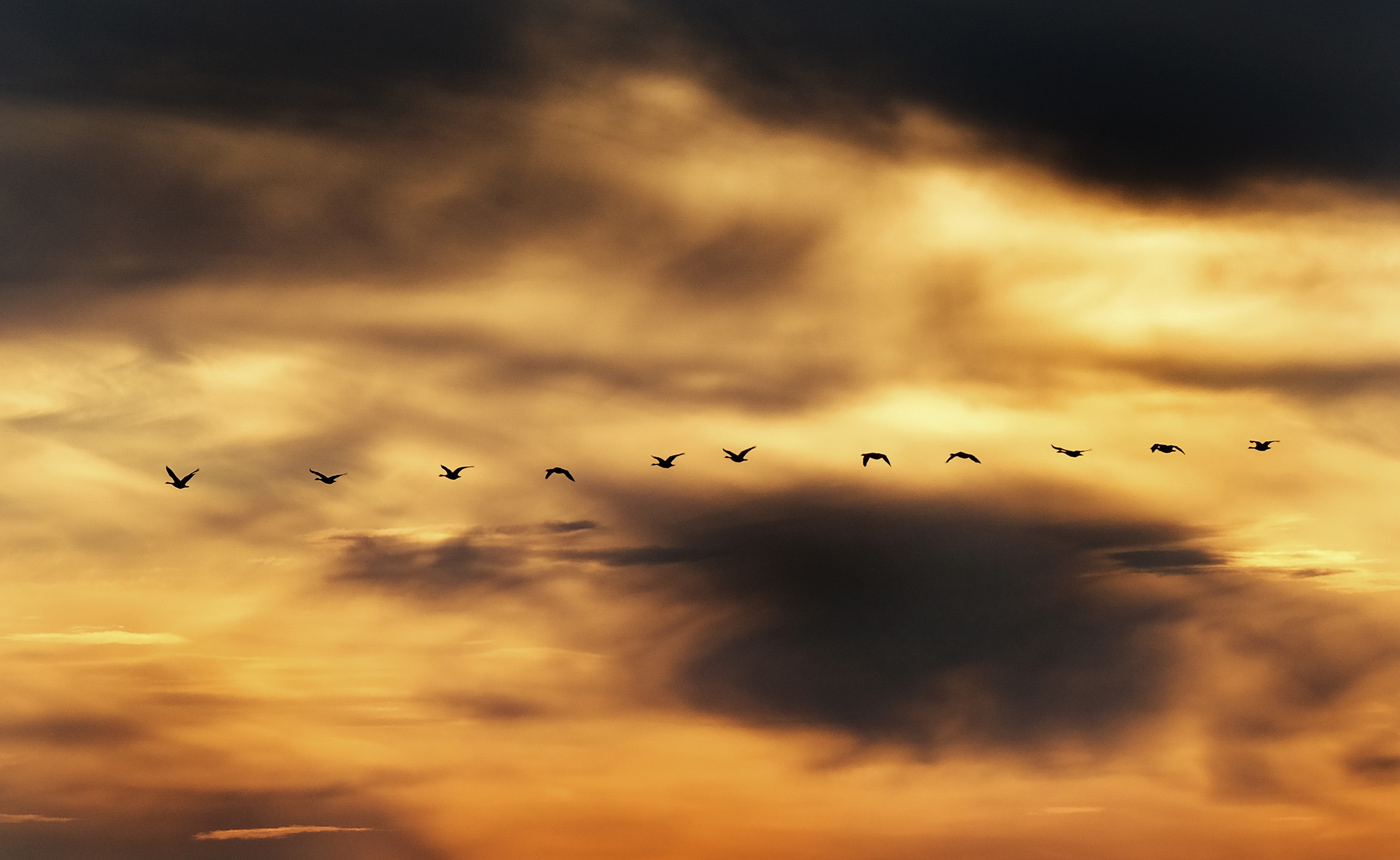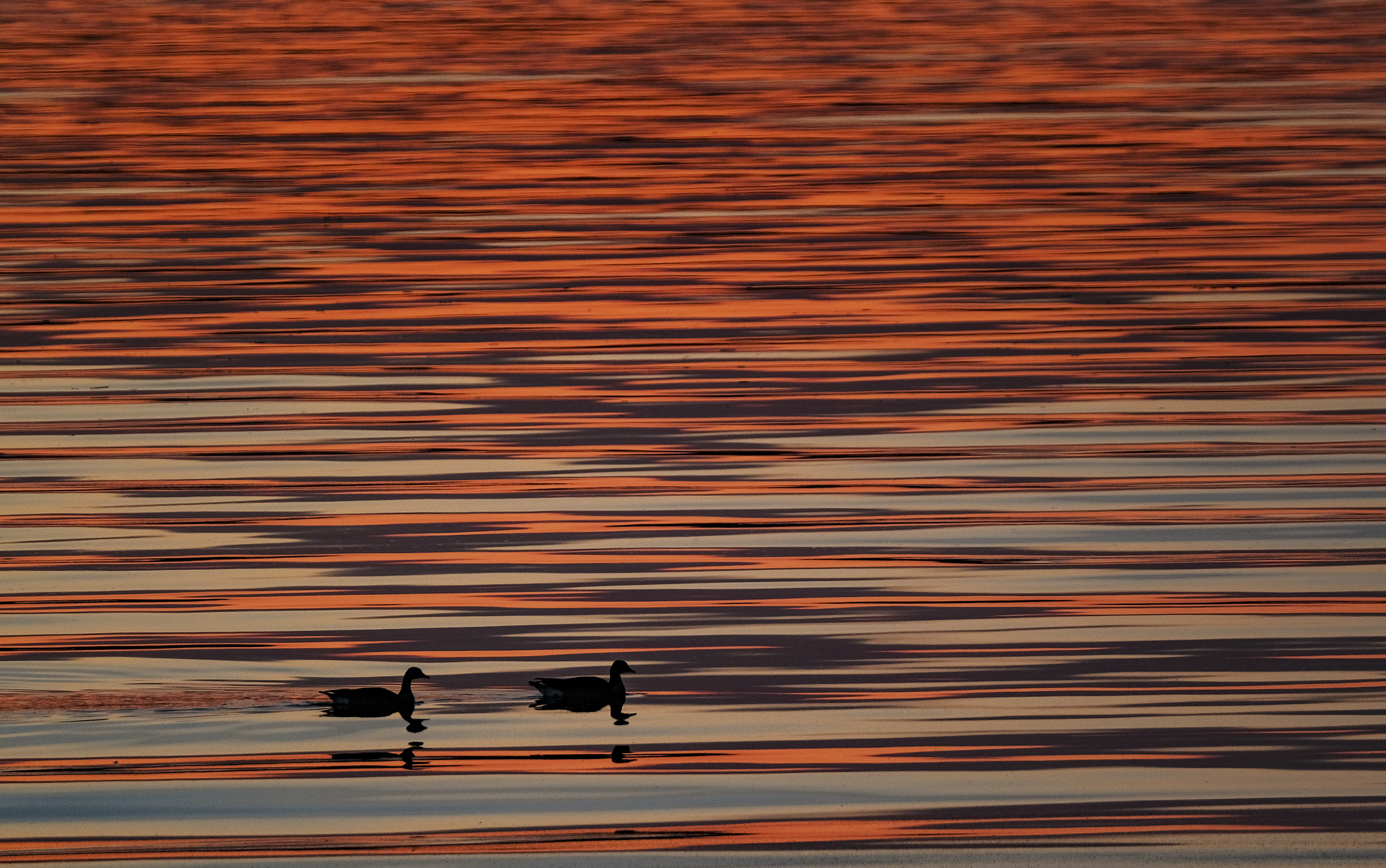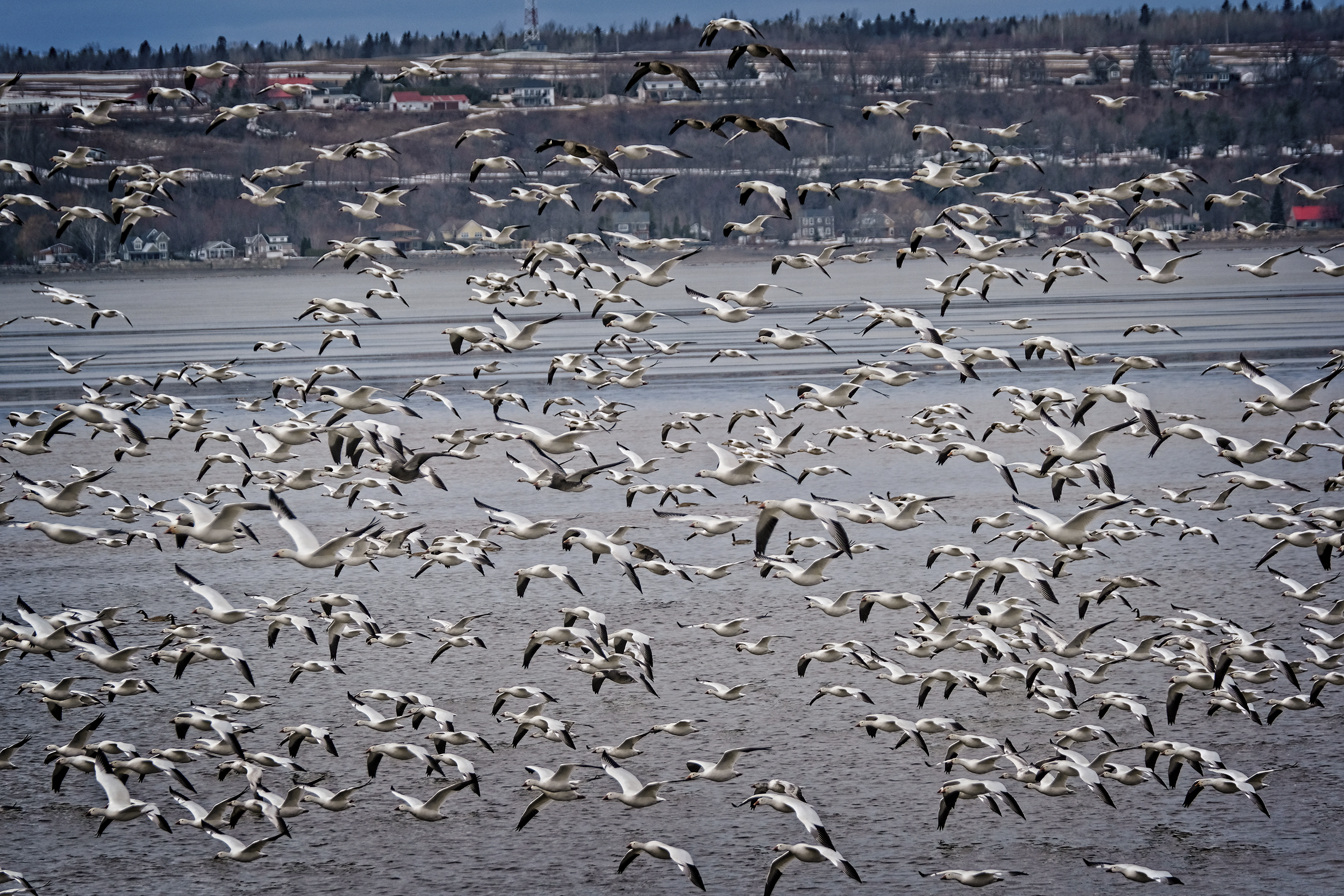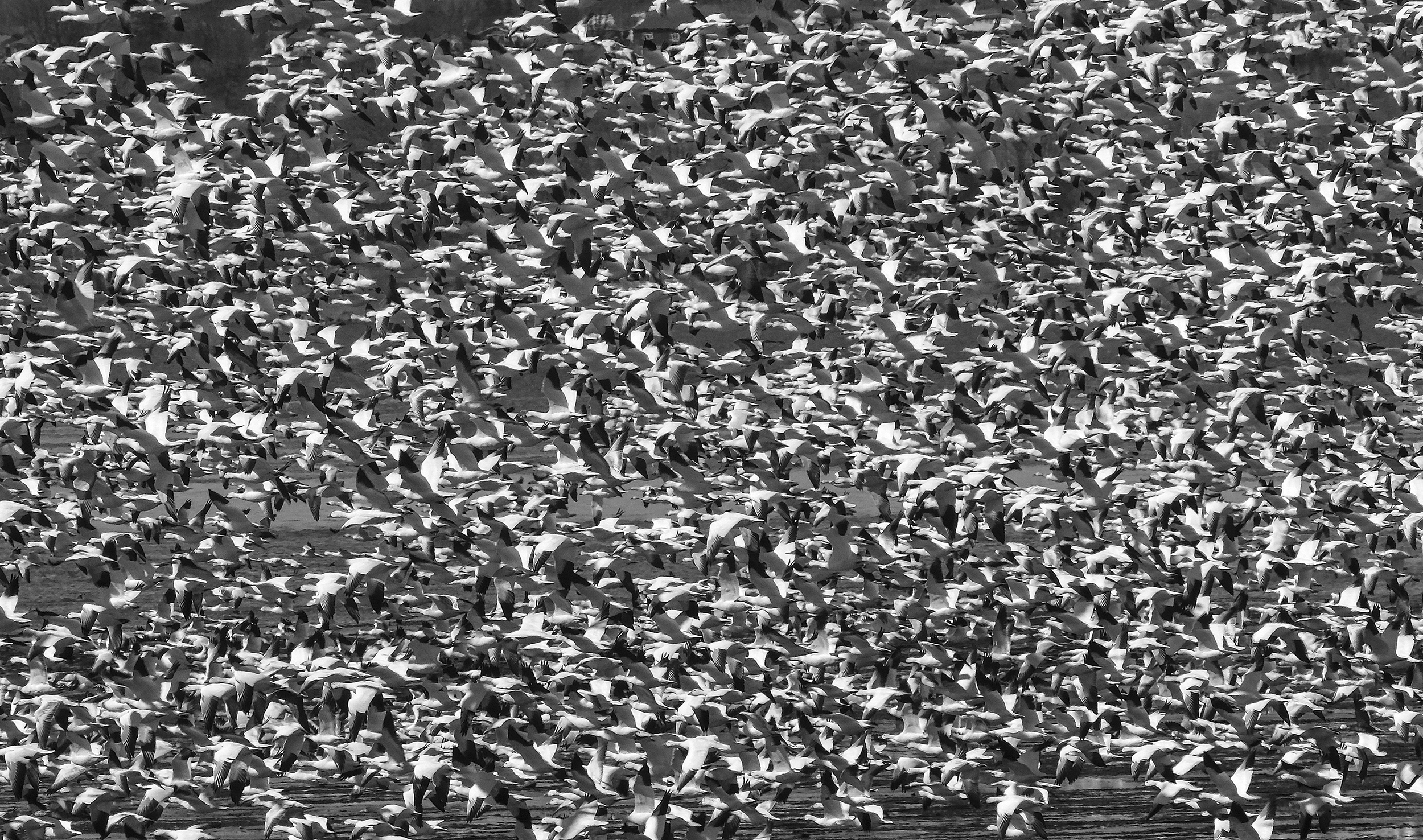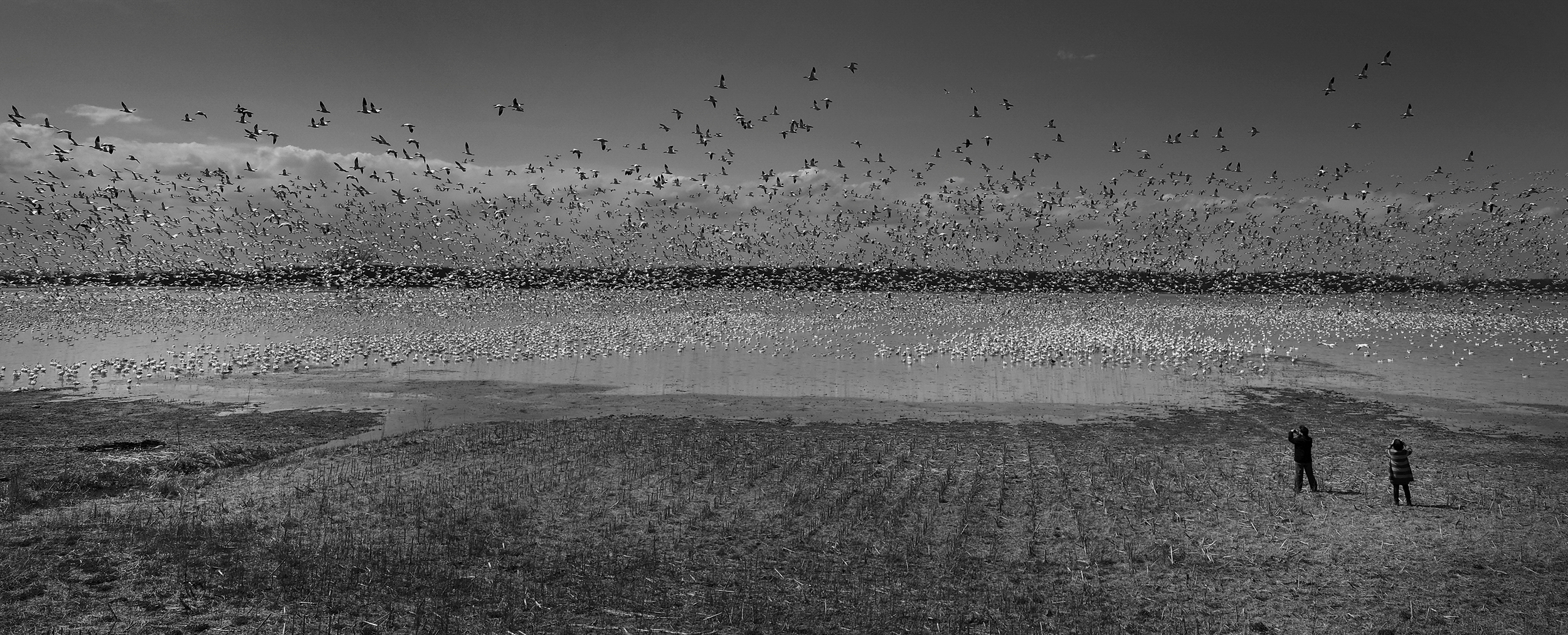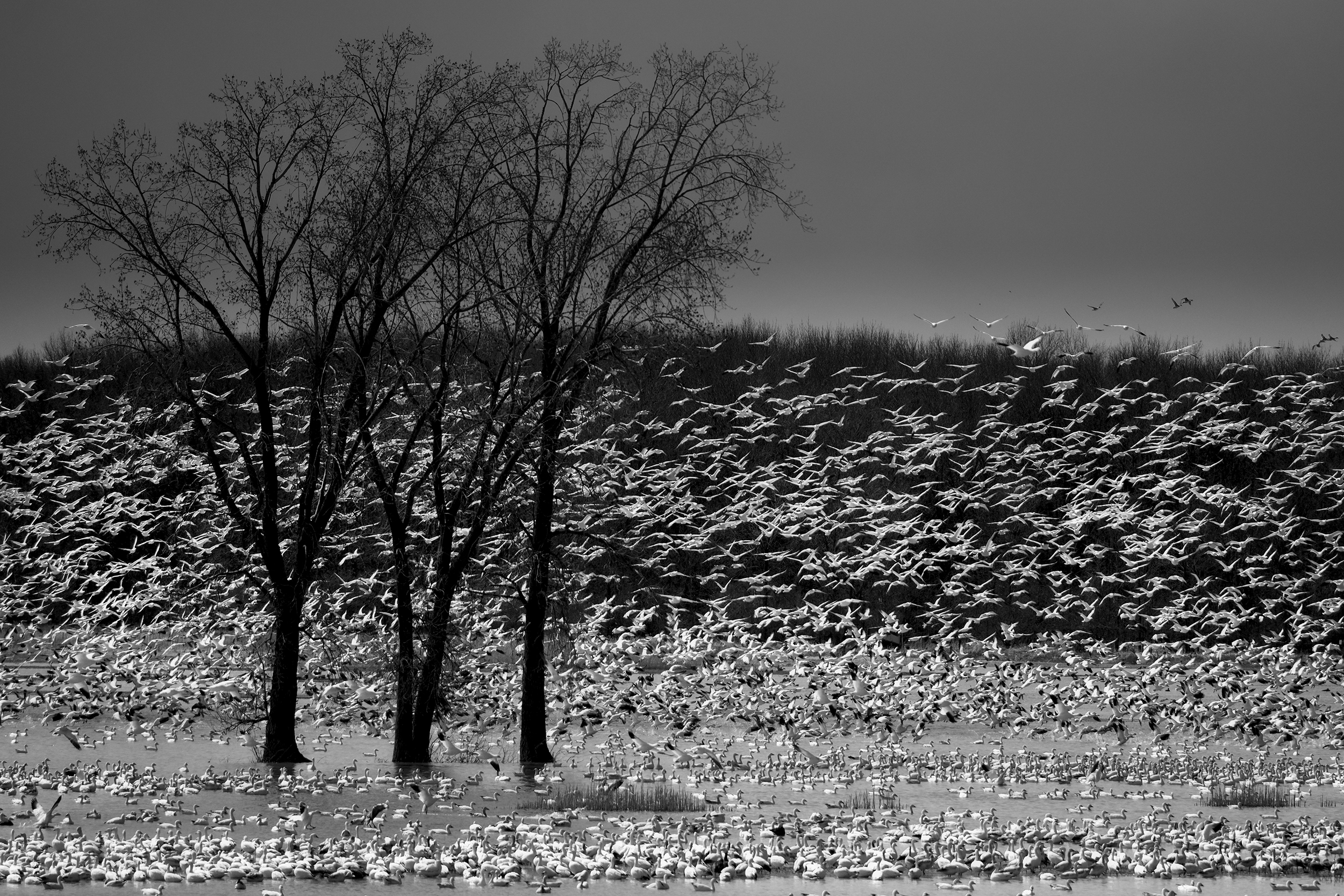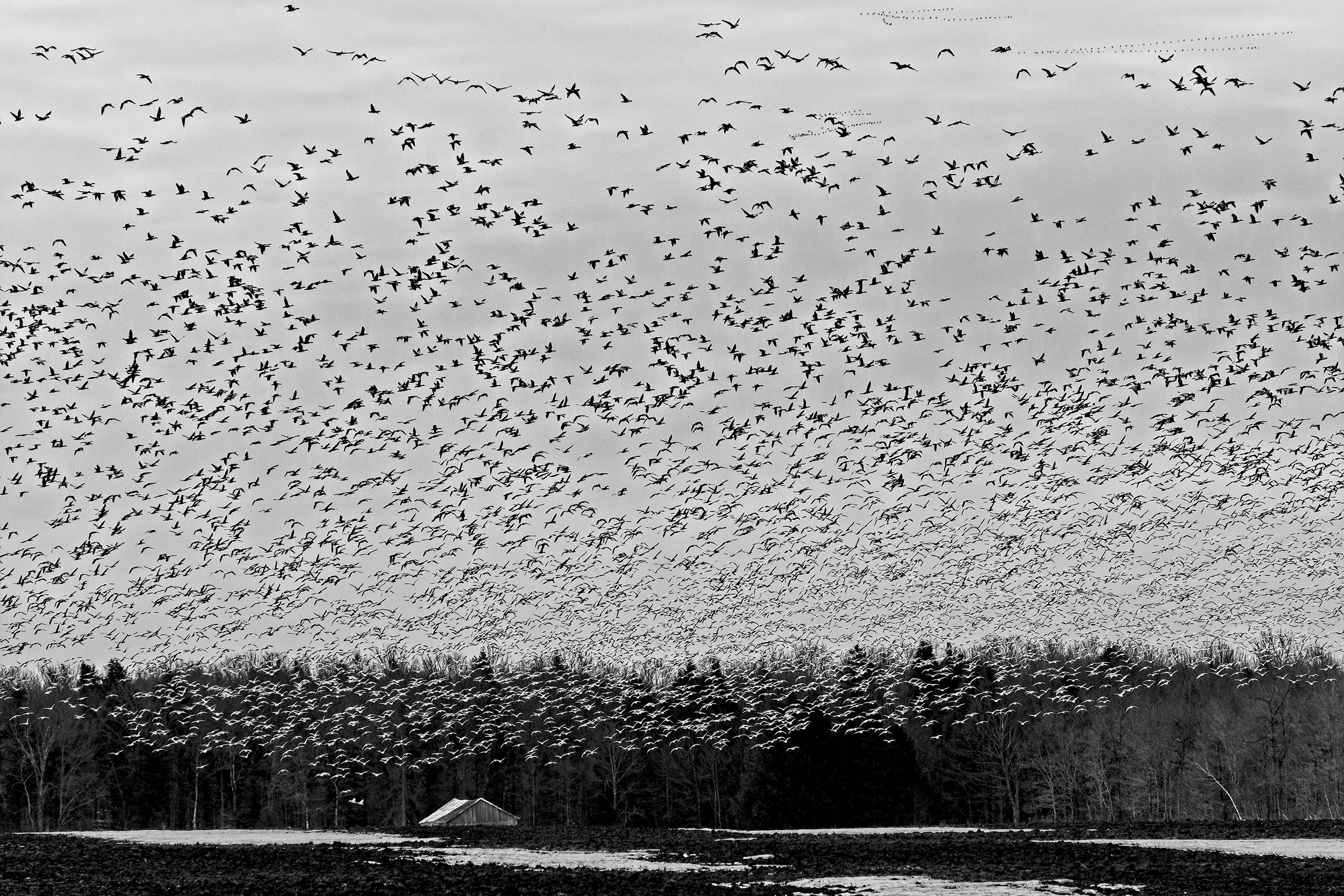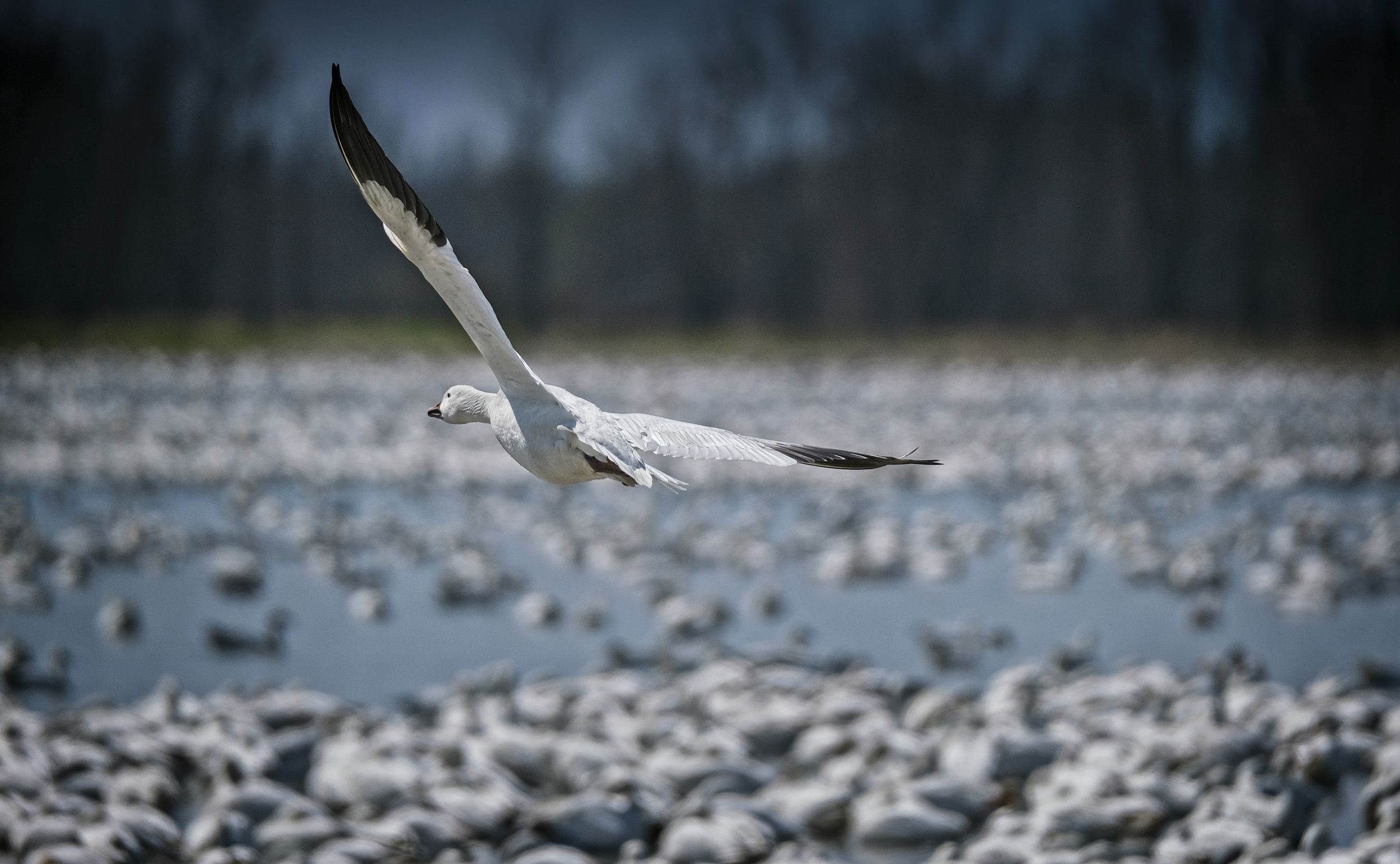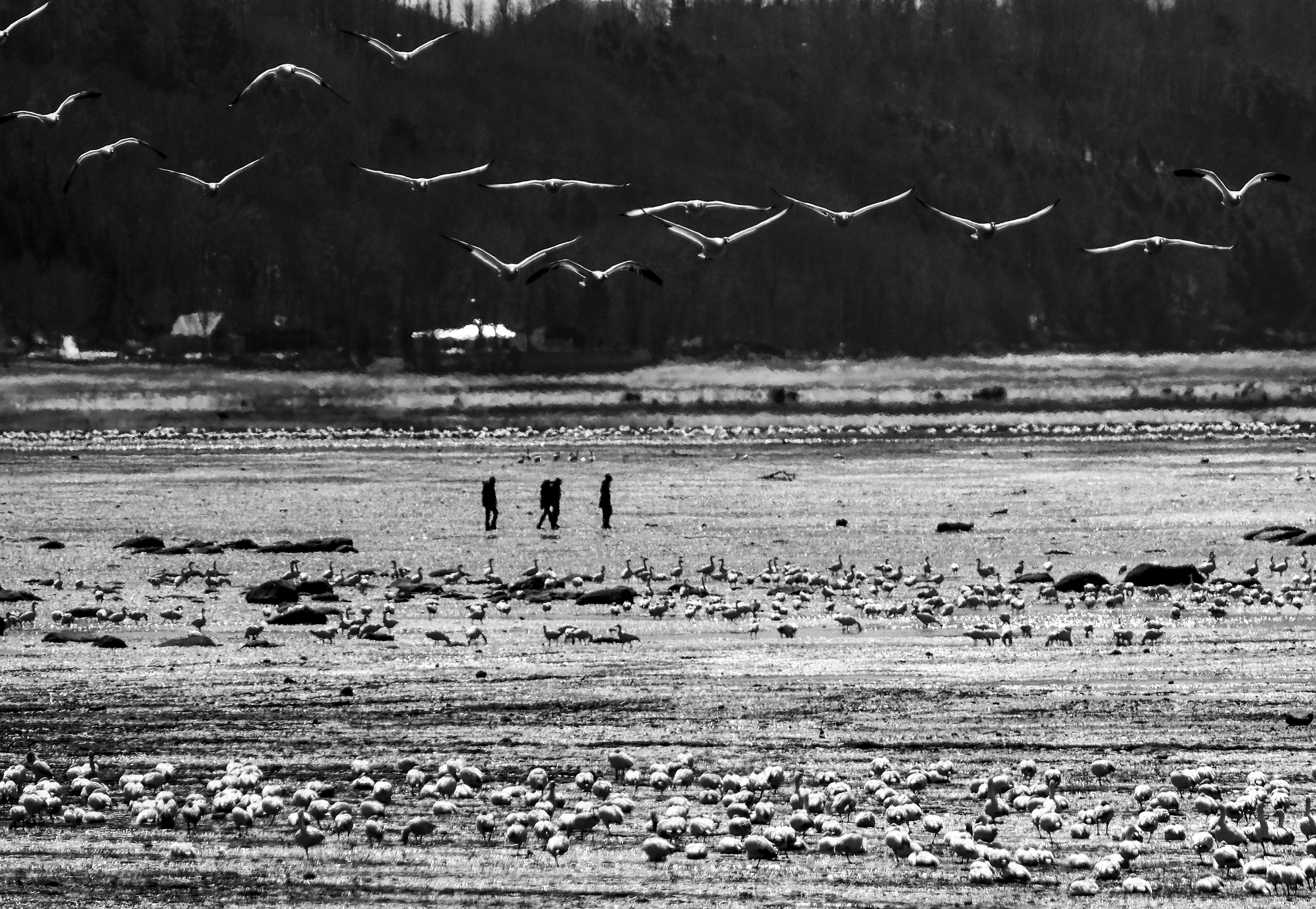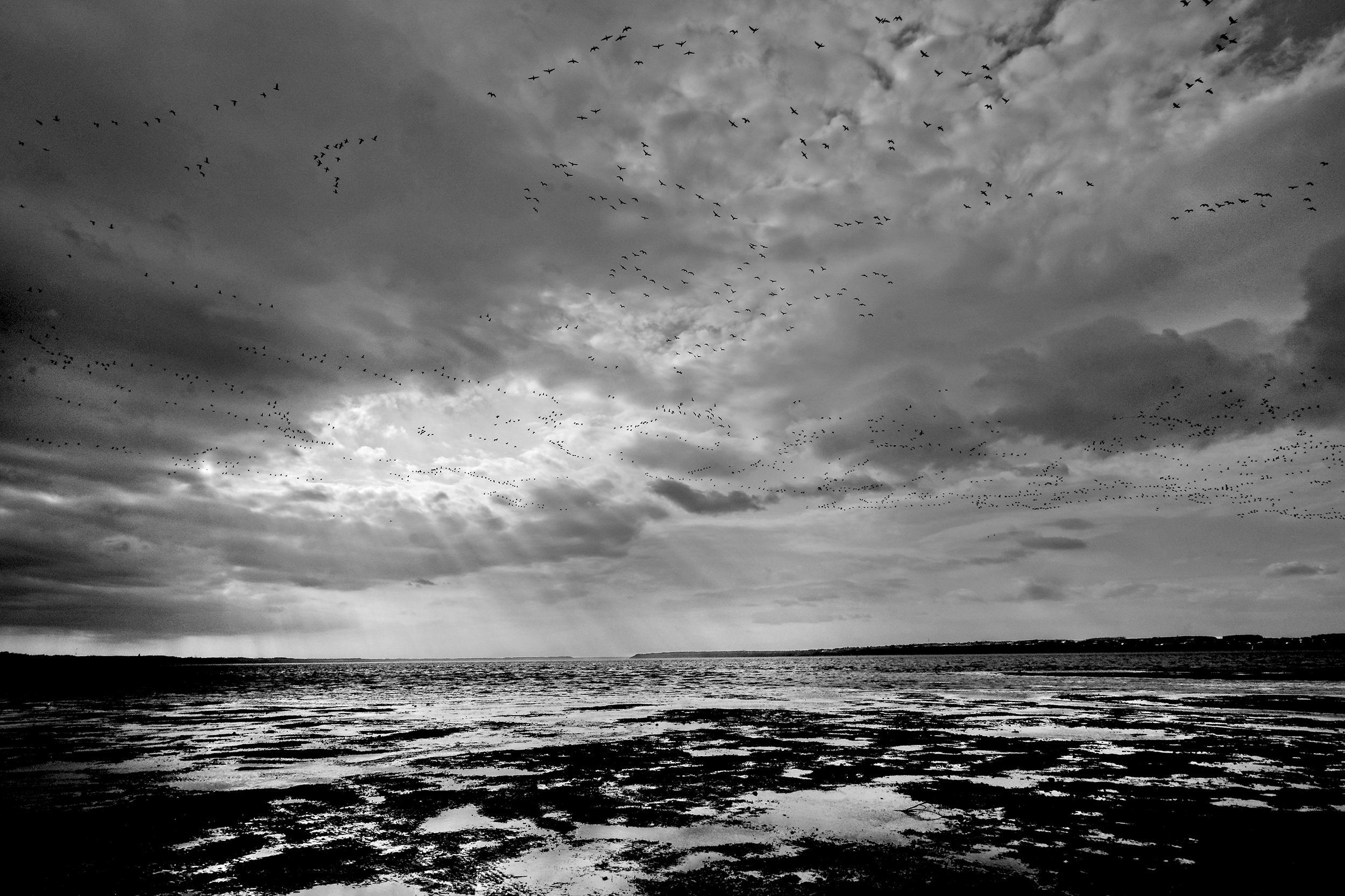The Mallard duck is often used as a symbol of Canada, with his green neck and the beautiful colors of his feathers. As it happens, Mallard is also my family name. This is probably why I also migrate south to an island in the Caribbean, during the harshest month of the Canadian winter.
In April, I return home to a small village called St. Nicolas, situated on the shores of the St. Lawrence River, about fifteen miles from Quebec City. My coming back home coincides with the arrival of the wild geese migratory period.
I take most of my photos at the dock at St. Antoine-de-Tilly, about ten miles from home, and in Baie du Febvre, an hour and a half drive west of my town.
The best time is at low tide, when thousands of geese are resting and eating. I have to be patient and wait for them to move, sometimes for hours on end. Just before a large group starts moving, the sound they make increases and as soon as the first group leaves, they all follow. It’s a magnificent sight, like a beautiful ballet in the sky. This is when I start shooting.
The dock is a perfect spot, and most of the time large groups are forming on each side of it, which gives me a different vantage and lighting points. Sometimes at low tide, I will walk on the river bank to have a different viewing angle. If I’m lucky when I return home at high tide, they’re all flying in the farmers’ fields to rest for the night, and I am able to capture various formations of geese, waiting to regroup to finally find a place to land and wait for low tide, and fly back to the St. Lawrence River.
For most of my photos, I use Fujifilm X-T3 with the XF100-400mm f/4.5-5.6, the XF50-140mm f/2.8 and the 2X extender.
For my wide-angle photos, I use X-Pro2 or X-E3 and the XF14mm f/2.8, depending on the weather of the day and the light. Sometimes I use shutter speed priority or go full manual mode.
As far as focus is concerned, I use continuous mode, and track with the joystick on the back of the camera. I don’t really like automatic tracking especially for this type of photography, but sometimes, I will switch to single focus, when contrast or shooting against the light is confusing my continuous mode.
I would rather use the light measuring system and focus, the way I used to when I was covering outdoors sports events and show, when the light can be tricky.
One tip that I give to young photographers when I give conferences on my work is the following: I started my career in the eighties and one of the basic techniques is to expose for high light and to process for low light. The same applies for digital photography. If you overexpose your highlights, you will not be able to get good details in these areas. It’s much easier to get back the details in low light but one thing is certain; a well exposed photo is the best start when doing post-processing.
I sometimes shoot in B&W Acros mode, but most of the time, I shoot in Standard mode, and depending on the mood I want to give the image I do my B&W post-processing using ON1 Raw 2020 and use texture that I do myself.
Getting good results depends on movement and background. It’s important to look around and choose an interesting background, for example, the light at sunset. The geese being mostly white, it’s great if you have a dark background, or even better, a mix of both. The white of the feathers will look darker on a lighter background. This often happens when they fly at low altitude over fields, with the mix of forest and sky, and if I’m lucky, on water, when a ship sails by and the birds will suddenly fly away in large groups. Then I can use the ship as a background. This situation is even more interesting when the ship is used in silhouette, the geese making a beautiful white foreground.

